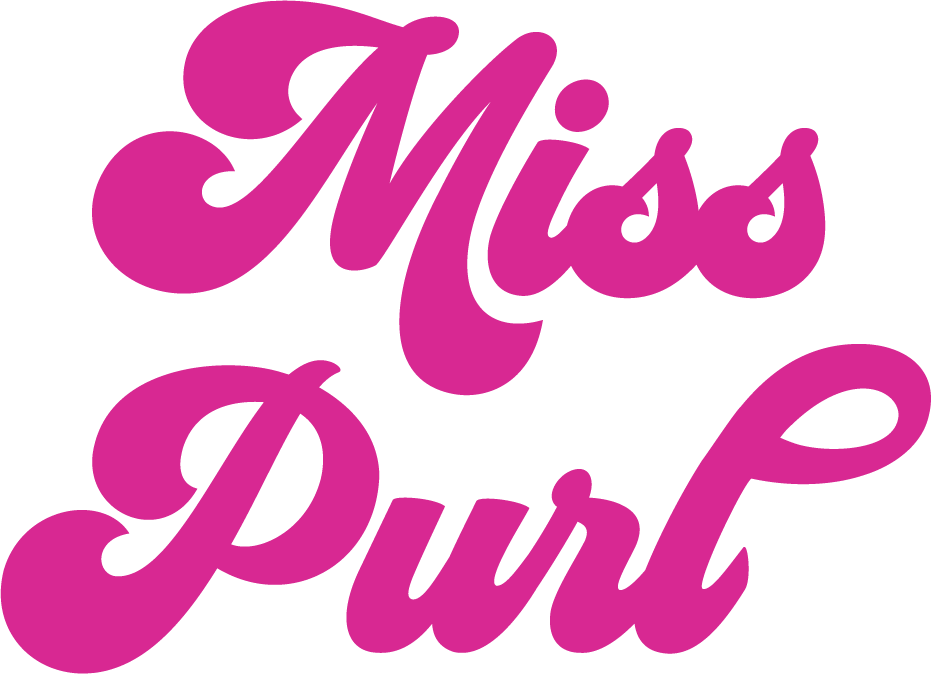Mwah! Keep it Simple Sweetie: Reading Crochet Stitches
Welcome to the first installment of our new series, Mwah! Keep it Simple Sweetie! This series is all about keeping the craft simple and enjoyable for one another by getting answers to the questions that stump us. The answers that aren't necessarily in a book or YouTube video. These tips are typically passed down between friends and hashed out through experience gleaned along the way. Without the fundamentals, it can be frustrating to follow a tutorial or progresson on a project alone. We're here to share that stitch wisdom, to encourage and challenge one another to soar.
This article is about crochet stitches. Click here to read the knit anatomy article.
Last weekend at our Drop-in Clinic, I had the pleasure of chatting with two wonderful students who were both puzzled by the same question: "How do I distinguish between different crochet stitches?" This got me thinking about how crucial it is to recognize these stitches, not just for counting, but also for seaming and even planning your next fabulous design. So, let's untangle this confusion together because understanding the visual differences between stitches will boost your confidence and make your projects shine. Here's to becoming a stitch-identifying superstar! Let’s get started.
Understanding the Top V, Front Loop, and Back Loop
When you're crocheting, the "Top V" is an essential part of each stitch. This "V" is formed by the two loops at the top of the fabric, where you typically insert your hook. The front loop is the part of the "V" closest to you, while the back loop is the part furthest from you. Working into different loops can create various textures and effects in your fabric. The "Top V" is primarily seen as the path your hook follows or when you look over the top of the fabric. Each "V" is on its side, and another "V" is nestled inside of it, creating a continuous chain of stitches.
The Posts of Crochet Stitches
The post of a crochet stitch is the vertical part that forms the body of the stitch, visible when you are facing the front of the fabric. You can think of the entire stitch as a "T" shape, where the "V" at the top is the crossbar of the "T," and the post is the leg of the "T." Each type of stitch has a different post height and appearance:
Single Crochet (sc): The post is short and straight, creating a dense and firm fabric.
Half Double Crochet (hdc): The post is taller than the single crochet and has one yarn over, giving it a slight angle and a bit more height.
Double Crochet (dc): The post is even taller, with one yarn over, creating a more open and airy fabric.
It’s all in checking out the post (pun intended)
The yarn-overs on the post (the post-like stitch on the front of the fabric) appear like angled lines, adding to the visual distinction of each stitch. For example:
Single crochet (sc): no angled line in the post
Half Double Crochet (hdc): One angled line in the middle of the post.
Double Crochet (dc): Two angled lines, one at the bottom and one in the middle of the post.
By understanding the height and visual look of the posts, including the yarn overs, you can easily identify and differentiate between the various crochet stitches in your projects.
Wrapping Up
I hope this deep dive into reading crochet stitches has helped untangle any confusion and boosted your confidence in identifying different stitches. Remember, understanding these visual differences is key not just for counting stitches, but also for seaming and planning your next fabulous design.
I'd love to hear how this guide has helped you! Share your thoughts and experiences in the comments below. And as a special thank you for reading, enjoy a $5 discount on our Mastering Crochet Pattern class this Friday at 11 AM. There are only a few seats left, so don't miss out! You can find more information and sign up here. Use the coupon code STITCH5 at checkout to claim your discount.
Make it stand out
Sign-Up for the Miss Purl January Workshop: Mastering Crochet Patterns January 17
Did this article pique your interest to master crochet patterns and diagrams? Register now for Miss Purl’s upcoming workshop on decoding crochet symbols and charts! You'll enjoy hands-on experience, personalized guidance, and the confidence to tackle any pattern. Sign up to unlock the full potential of your crochet projects.



